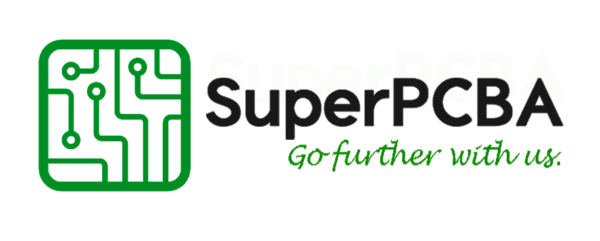Circuit board proofing (PCB proofing) refers to the trial production of printed circuit boards before mass production. Proofing for circuit boards (PCB proofing).
Circuit board proofing manufacturer production process editing broadcast.
- Contact the manufacturer
First of all, it is necessary to inform SuperPCBA of documents, process requirements and quantities. - Opening
Purpose: According to the requirements of the engineering data MI, on the large sheets that meet the requirements, cut them into small pieces for production. Small pieces that meet customer requirements.
Process: large sheet → cutting board according to MI requirements → cutting board → beer fillet \ edging → board out - Drilling
Purpose: According to the engineering data, drill the required hole diameter at the corresponding position on the sheet that meets the required size.
Process: stacking pin → upper plate → drilling → lower plate → inspection\repair
Four, sinking copper
Purpose: Copper sinking is to deposit a thin layer of copper on the insulating hole wall by chemical method.
Process: rough grinding → hanging plate → copper sinking automatic line → lower plate → immersion in 1% dilute H2SO4 → thickening copper - Graphic transfer
Purpose: Graphic transfer is the transfer of the image on the production film to the board
Process: (blue oil process): grinding board→printing the first side→drying→printing the second side→drying→exploding→imprinting→checking; (dry film process): hemp board→lamination→standing→pairing Bit→Exposure→Stand→Development→Check - Graphic electroplating
Purpose: Pattern electroplating is to electroplate a copper layer with the required thickness and a gold-nickel or tin layer with the required thickness on the exposed copper skin of the circuit pattern or on the hole wall.
Process: upper plate → degreasing → secondary washing with water → micro-etching → water washing → pickling → copper plating → water washing → pickling → tin plating → water washing → lower plate - Removal of film
Purpose: Use NaOH solution to remove the anti-plating coating layer to expose the non-circuit copper layer.
Process: water film: insert rack → soak in alkali → rinse → scrub → pass machine; dry film: put plate → pass machine
Eight, etching
Purpose: Etching is to use chemical reaction method to corrode the copper layer of non-circuit parts.
Nine, green oil
Purpose: Green oil is to transfer the graphic of green oil film to the board to protect the circuit and prevent the tin on the circuit when welding parts.
Process: grinding board → printing photosensitive green oil → curium board → exposure → developing; grinding board → printing the first side → baking board → printing the second side → baking board - Characters
Purpose: A character is provided as an easily identifiable mark
. Process: green oil after finishing → cooling and standing → adjusting the screen → printing characters → after cutting
Eleven, gold plating
Finger purpose: Plate a layer of nickel/gold with the required thickness on the plug finger to make it more wear-resistant. Copper plating → water washing → nickel plating → water washing → gold plating.
Tin plate? (A parallel process) Purpose: Spray tin is to spray a layer of lead and tin on the exposed copper surface that is not covered with solder mask oil to protect the copper surface from corrosion and oxidation, so as to ensure good welding performance. Process: micro-etching→air drying→preheating→rosin coating→solder coating→hot air leveling→air cooling→washing and air drying - Forming
Purpose: Organic gongs, beer boards, hand gongs, and hand-cutting are the methods of forming the shapes required by customers through die stamping or CNC gong machines.
Description: The accuracy of the data gong machine board and the beer board is high, the hand gong is second, and the hand cutting board can only do some simple shapes at least. - Test
Purpose: Through the electronic 100% test, detect the open circuit and short circuit that are not easy to find visually, which affect the function.
Process: upper mold → board release → test → qualified → FQC visual inspection → unqualified → repair → return test → OK → REJ → scrap - Final inspection
Purpose: 100% visually inspect the appearance defects of the panels, and repair minor defects, so as to avoid the outflow of defective and defective panels.
Specific work flow: incoming materials → viewing materials → visual inspection → qualified → FQA random inspection → qualified → packaging → unqualified → processing → check OK. Now, contact with SuperPCBA if you need a
Now, contact with SuperPCBA for Circuit board samples to enjoy our 100% worry-free service!



